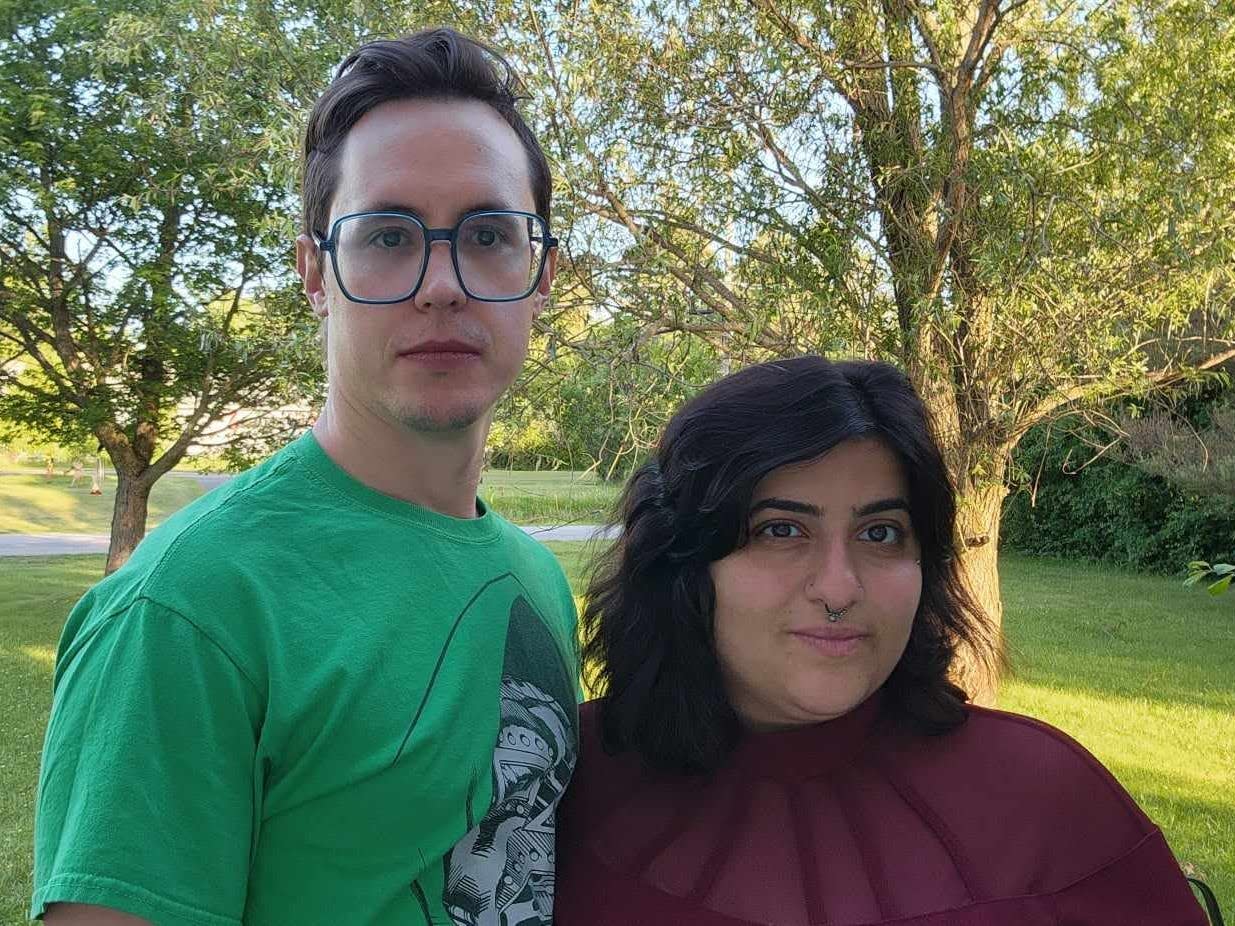After my husband and I stopped wearing our wedding rings, we tried polyamory. 3 years later, we're happily nonmonogamous.

My partner and I were monogamous for the first six years of our relationship.
Now, we are nonmonogamous, and neither of us wears our wedding rings.
It's a never-ending journey, and we've learned a lot about ourselves and each other.
My partner Sean and I started dating in 2013 and married in 2019. We were monogamous for six years and began our journey with polyamory around the same time we decided to get married. After a disastrous attempt, we reverted back to monogamy one year later, only to open the door to polyamory again in 2021.
Our reasons for exploring the relationship style again were vastly different. Sean is an easy-going and open-minded person. He's never been the jealous type, and polyamory naturally appealed to him.
I decided to try polyamory again because of some feelings I was having after I stopped wearing my wedding ring. Maybe it sounds a little ridiculous that I made a big decision over a piece of jewelry, and at the time, I didn't quite put together how the two things were related. Years later, after much introspection, I found my answer.
Wedding rings are supposed to symbolize to the world we are committed to one person forever. Polyamory, for us, is a lifestyle where we can explore ourselves more deeply and with other people. For me, wearing a wedding ring felt at odds with my desire to be nonmonogamous.
Initially, I couldn't wait to wear my ring
I was excited about wearing my wedding ring, but Sean was indifferent about wearing his. That bothered me, but I realized it was too minuscule to get worked up over. Sean and I were already a non-traditional couple, having explored nonmonogamy in the past.
Regardless of our unconventional ways, Sean bought me the perfect wedding ring — two silver cats surrounding a white gold diamond. He couldn't find a ring he wanted, so he asked me to make one with epoxy resin. I did, but it didn't fit him and he didn't press me to make another one. I took his nonchalant attitude personally when, in reality, he just had less attachment to the idea of wearing a ring. Eventually, I also stopped wearing mine.
I worried what my family and friends would say when I took my ring off
Even after becoming less attached to my ring, I worried what others would think. I wondered whether my family and friends would notice and, if they did, how they would perceive us as a couple. I felt the love I shared with my partner might come into question.
A fear of judgment was impacting my choice to wear a ring. It was also affecting my ability to act on my desire to be polyamorous. But since I had worked through the shame that came with going against the societal expectation to wear a wedding ring, I thought we might be ready to try nonmonogamy again.
For me, being in a nonmonogamous dynamic is an act of radical love
As an abolitionist, I work to decolonize my mind and my relationships. I'm not the type of person to claim ownership over another. To me, that is exactly what wearing a wedding ring symbolized: Sean as my property. I didn't want that for us, and he didn't either. Once the ring came off and my research brain turned on, I read more about polyamory, starting with books like "The Ethical Slut: A Practical Guide to Polyamory, Open Relationships & Other Adventures'' and "Polysecure: Attachment, Trauma and Consensual Nonmonogamy."
One difficult aspect of polyamory is working through the insecurities you have to just get started. There are no rigid rules or structures, just rough guidelines. You figure it out as you go and will likely hit some bumps and potholes along the way.
For Sean and me, being in a nonmonogamous relationship means we can be intimately connected with others, both sexually and emotionally. Every new relationship encourages introspection and growth. Sure, you can get that in monogamy, but we're bound to learn more from multiple relationships.
Nonmonogamy is a way for us to celebrate our love. Although insecurities come up — including some I never thought I had — there are good feelings, like compersion, which is when a person feels joy from seeing their partner happy, whether or not that happiness involves them directly. Working through the guilt I felt for not conforming to societal norms was liberating, and I continue to learn more about myself every day.
Read the original article on Business Insider


